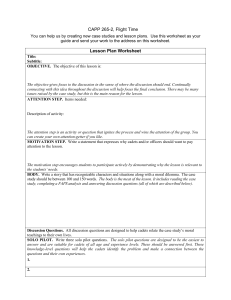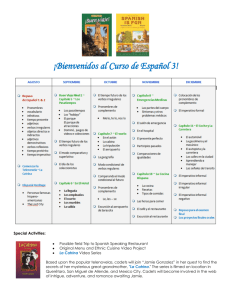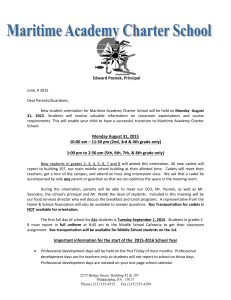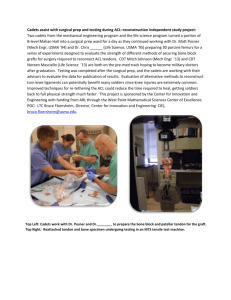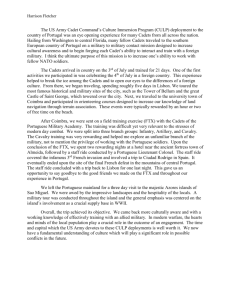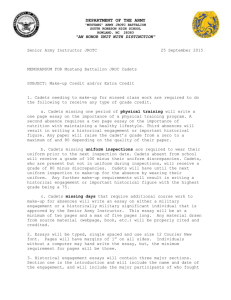Lesson Plan Worksheet (MS Word)
advertisement
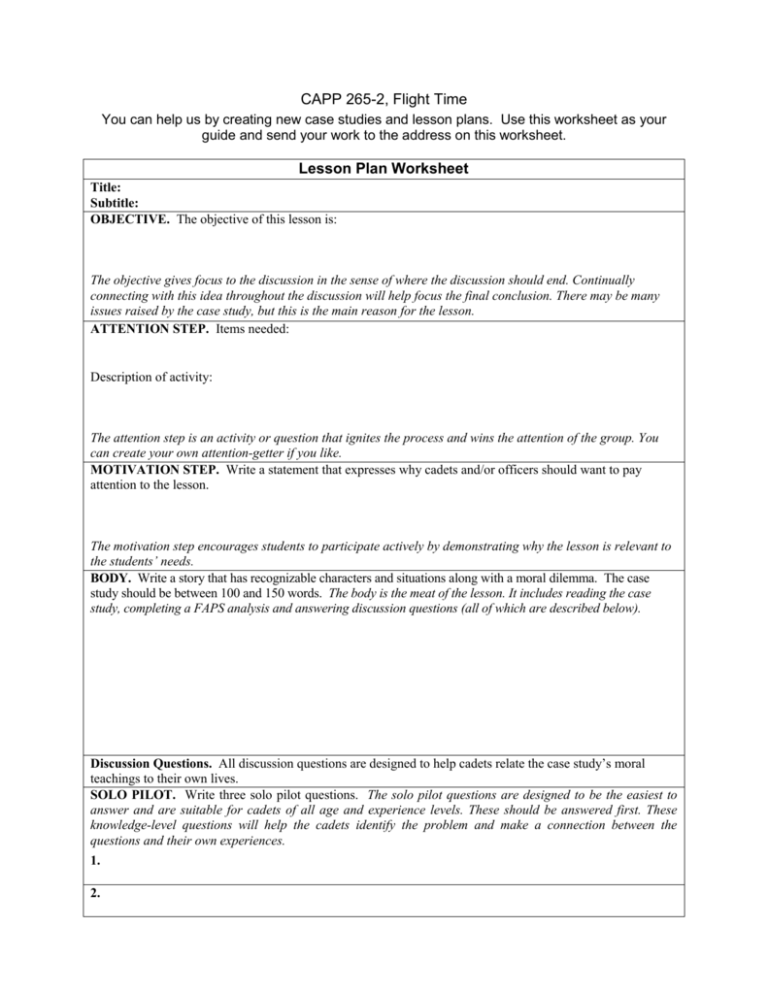
CAPP 265-2, Flight Time You can help us by creating new case studies and lesson plans. Use this worksheet as your guide and send your work to the address on this worksheet. Lesson Plan Worksheet Title: Subtitle: OBJECTIVE. The objective of this lesson is: The objective gives focus to the discussion in the sense of where the discussion should end. Continually connecting with this idea throughout the discussion will help focus the final conclusion. There may be many issues raised by the case study, but this is the main reason for the lesson. ATTENTION STEP. Items needed: Description of activity: The attention step is an activity or question that ignites the process and wins the attention of the group. You can create your own attention-getter if you like. MOTIVATION STEP. Write a statement that expresses why cadets and/or officers should want to pay attention to the lesson. The motivation step encourages students to participate actively by demonstrating why the lesson is relevant to the students’ needs. BODY. Write a story that has recognizable characters and situations along with a moral dilemma. The case study should be between 100 and 150 words. The body is the meat of the lesson. It includes reading the case study, completing a FAPS analysis and answering discussion questions (all of which are described below). Discussion Questions. All discussion questions are designed to help cadets relate the case study’s moral teachings to their own lives. SOLO PILOT. Write three solo pilot questions. The solo pilot questions are designed to be the easiest to answer and are suitable for cadets of all age and experience levels. These should be answered first. These knowledge-level questions will help the cadets identify the problem and make a connection between the questions and their own experiences. 1. 2. 3. PILOT. Write two pilot questions. The pilot questions are for older cadets and are more complex in their scope and answer. They will normally require multiple responses to fully answer the question. These questions will challenge the cadets to begin to interpret the ramifications of the story. Younger cadets should listen to the older cadets’ responses, and/or try to answer them as well. 1. 2. TEST PILOT. Write one test pilot question. The cadets are then given a few minutes to individually answer the test pilot question(s) in writing. This question challenges each cadet to apply the information gained during the session to the case study and provide an answer based on personal moral choices. 1. SUMMARY. Write a brief statement that summarizes the point of the lesson that is connected with your objective. The summary is a restatement of the discussion’s high points. It shows how those points fulfilled the objective. REMOTIVATION. Write a statement that challenges the cadets to follow through on their moral choice(s). The remotivation is when the instructor encourages the cadets to retain and use what they have learned. CLOSING. Write a closing statement that is memorable. The closing is a parting statement that dismisses the group with a memorable thought relating to the learning objective. Closings should be very brief, otherwise they diminish the worth of the summary and remotivation. YOUR INFORMATION Name: Grade: Unit & Wing: Address: E-mail: SEND TO: Phone: Rita LaBarre Chaplain Program Administrator 105 South Hansell Street Maxwell AFB, AL 36112-5937 rlabarre@capnhq.gov
